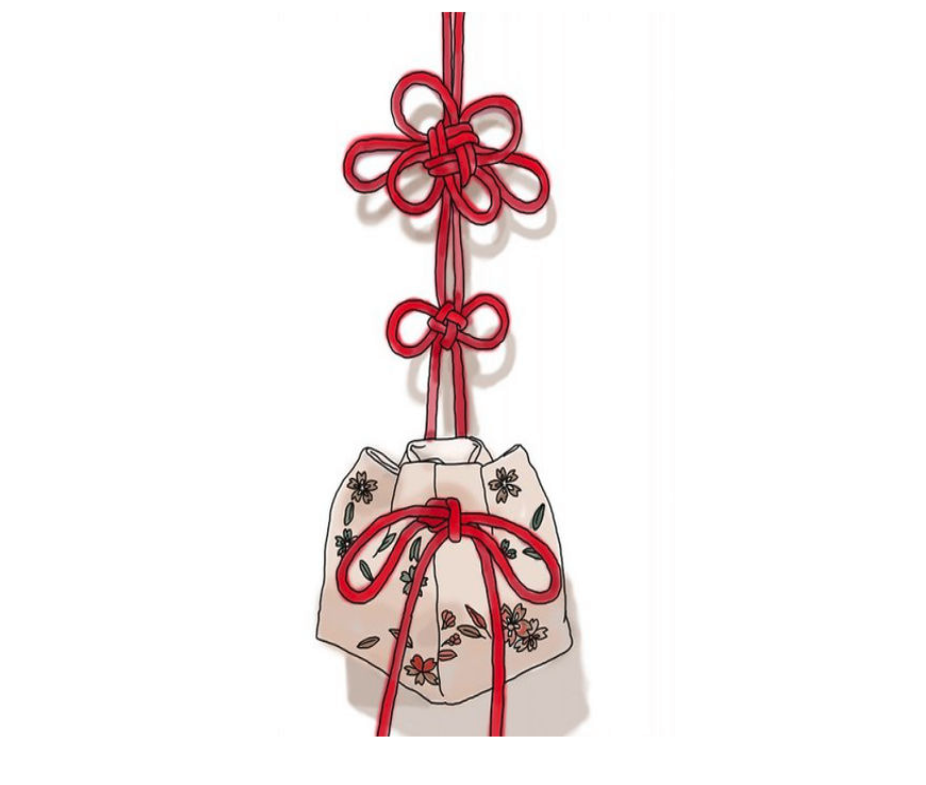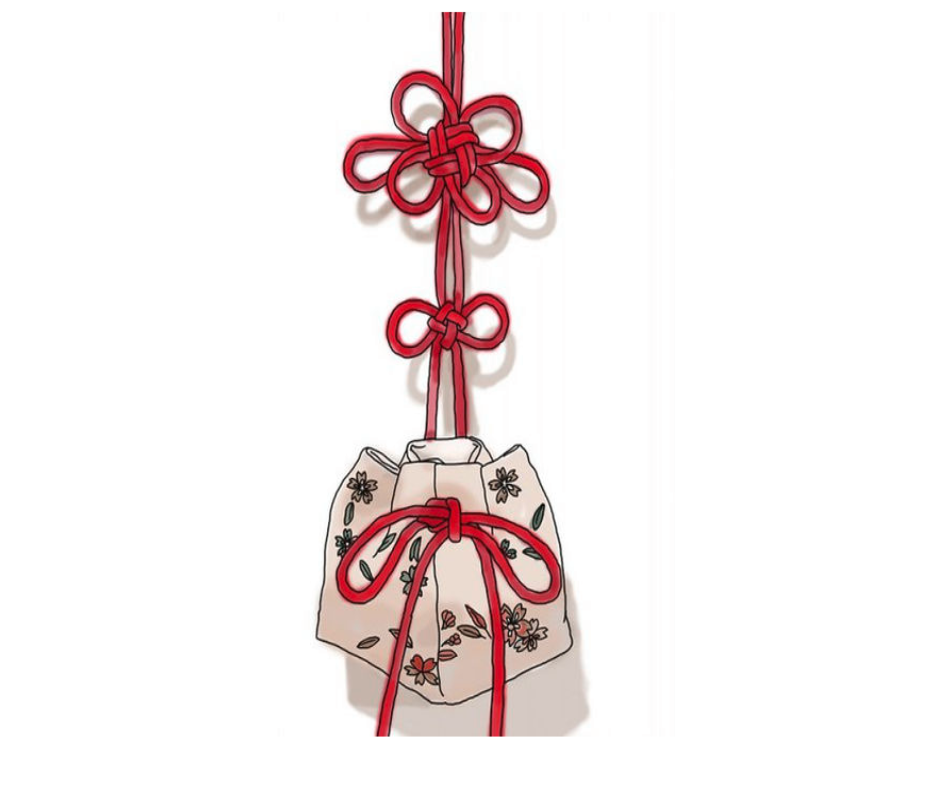京都着物レンタル夢館
Musubi (結び, knots) techniques are deeply connected with many Japanese traditions, such as knots for Obi (帯) belts for Kimono, decorative knots for Kimono accessories like Obiage/Obijime (帯揚げ/帯締め), Furoshiki (風呂敷, Japanese wrapping cloth) ties, Mizuhiki (水引) ties for Syugibukuro (祝儀袋, special envelope for monetary gifts). Apart from Kimono fashion, the closing statements of speeches are also referred to as Musubi.
Hon-Musubi (本結び), the most basic tying style was already used in the New Stone age, and is very difficult to untie once it is fastly tied. Hence, Katahana-Musubi (片花結び) and/or Hana-Musubi (花結び) are more commonly employed for dressing in Kimono in order to make it easier to get undressed.
In the world of Kodo (香道, Japanese traditional incense-smelling ceremony), we have a custom to hang scented sachets called Kariroku (訶梨勒) to walls and pillars of the venue. The decorative knots attached to Kariroku are very complex and beautiful. It requires extremely high skilled techniques.
Nowadays, many kinds of Obi knots for Furisode (振袖, long sleeved kimono for unmarried female) are newly developed, and it requires Kimono dressers to improve their dressing skills even more. The most basic skill for them is the tying technique.
Click here to see a Blog by a Former Maiko, “Do You Know?”


#Japanesecraftwork #kimono #Japaneseculture #japanculture #kyotoculture



